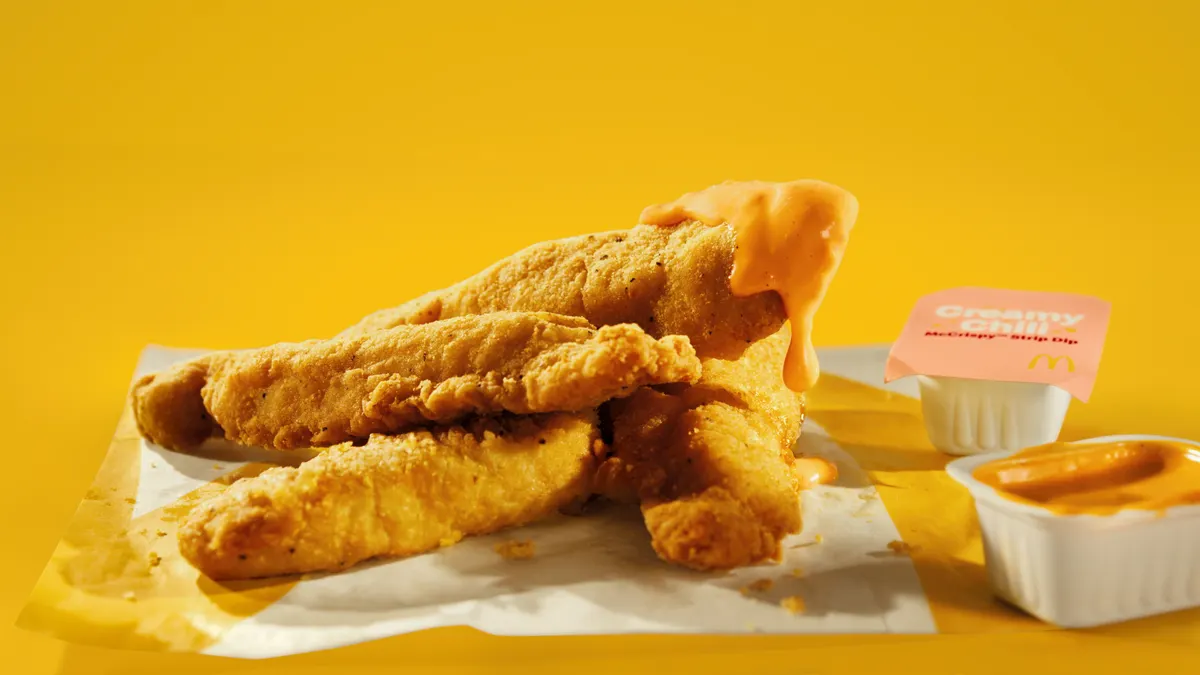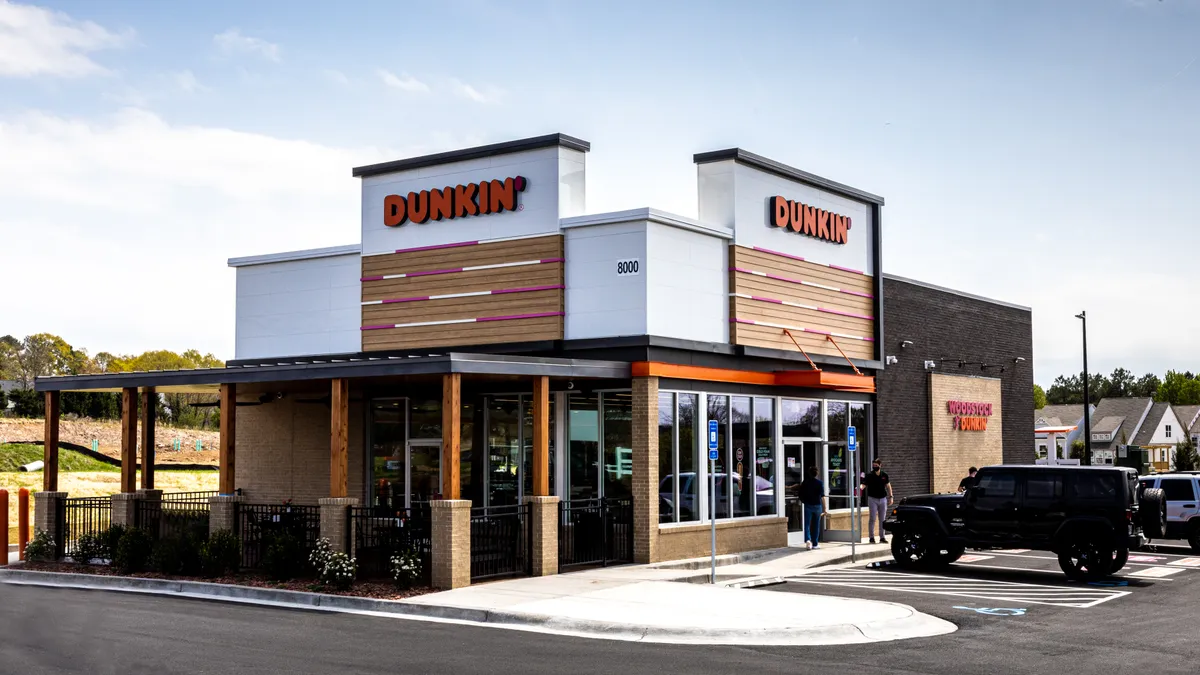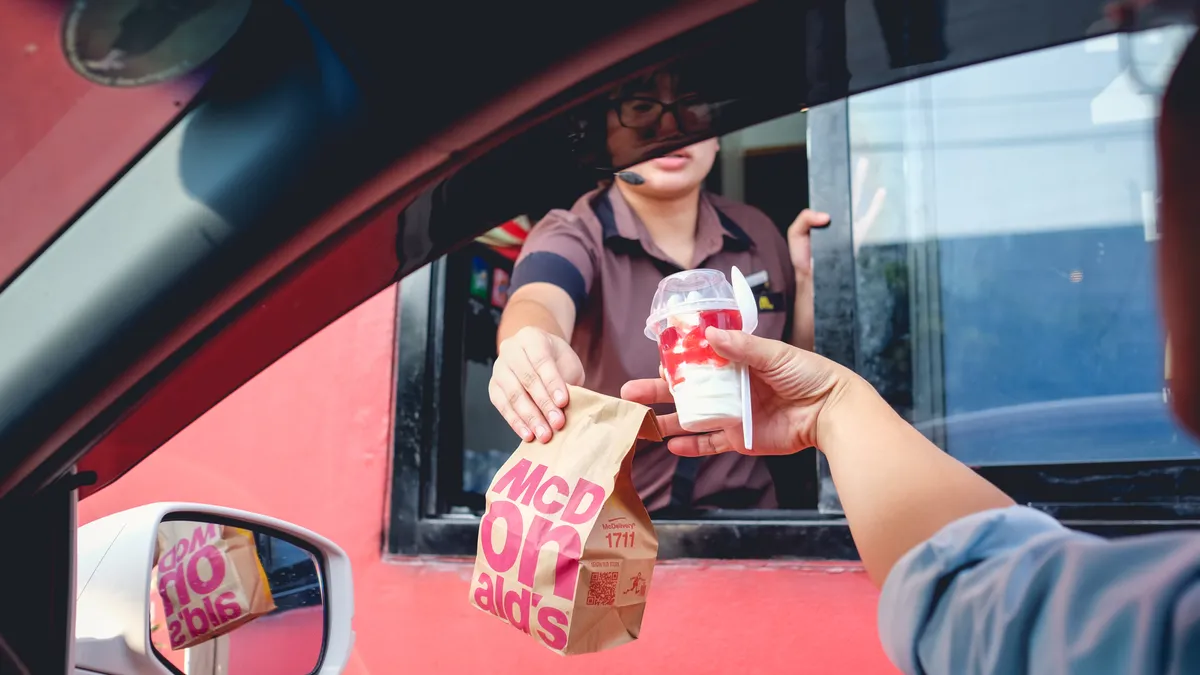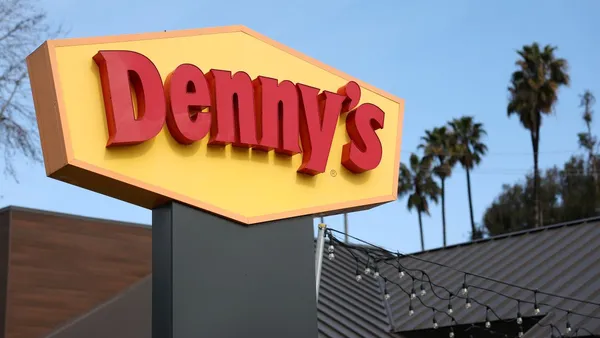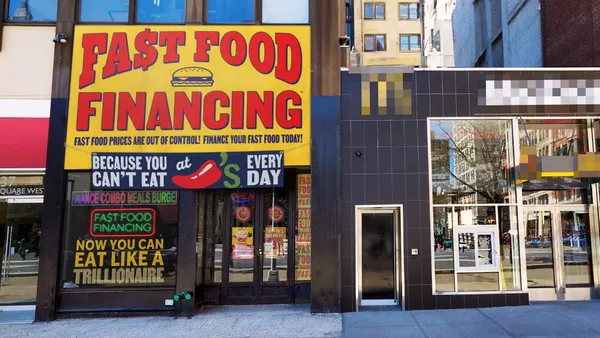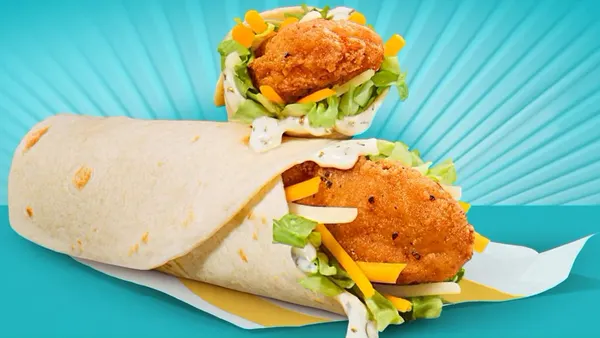Dive Brief:
- The Golden Arches’ same store-sales trouble ended in Q2 2025, according to the chain’s most recent earnings release, with the key metric rising by 2.5% in the U.S.
- McDonald’s outperformed its close competitors in guest count and comp sales, CEO Chris Kempczinski said on the chain’s Wednesday earnings call, despite continued weakness in overall QSR traffic — particularly among low-income consumers.
- McDonald’s experienced broad-based growth across its core markets, driven by its value offerings and menu innovation, Kempczinski said. CFO Ian Borden said the brand’s McCrispy Chicken Strips and Minecraft promotion drove consumer enthusiasm in Q2, while its snack wrap LTO extended the gains in Q3.
Dive Insight:
The brand’s focus on menu innovation helped it kick the sales trouble that began in mid-year 2024, when pullback by low-income consumers pitched sales growth into negative territory for the first time in years.
So far in 2025, McDonald’s has announced three new leadership teams focused specifically on chicken, beef, dessert and beverage innovation. Dessert innovation may be of particular urgency for the brand, given the end of McDonald’s nascent Krispy Kreme partnership.
Three recent menu additions have helped the Golden Arches boost sales gains. In July, the chain relaunched its snackwrap LTO after a six-month buzz buildup, helping to kick off renewed chicken competition in the QSR segment. The chain also added the Daily Double cheeseburger to its menu through year’s end, anchoring the higher end of its value menu. Then McDonald’s added McCrispy Chicken Strips to the permanent menu in May.
Later this year, McDonald’s will test a slate of premium beverages at more than 500 stores, with the drinks based on lessons learned from the now-shuttered CosMc’s drinks concept. Those drinks could help the chain capture traffic that’s shifting to afternoon snacking occasions.
Combined with the new dishes, McDonald’s value platforms and loyalty program have helped improve its market position. Kempczinski said the chain’s loyalty users visit the chain 26 times in a year, compared to about 10 visits for non loyalty members. The McValue program, including the $5 Meal Deal, has also driven visits.
Together, McValue and loyalty account for 50% of restaurant visits in the U.S., Kempczinski said, with relatively little overlap between the two channels. Kempczinski said McDonald’s is looking at its core menu pricing, in concert with franchisees, as it looks to boost frequency among consumers who aren’t using its rewards program or its McValue platform.
“Today, too often, if you're that consumer, you're driving up to the restaurant and you're seeing combo meals could be priced over $10,” Kempczinski said. “That absolutely is shaping value perceptions in a negative way. So we've got to get that fixed.”
But Borden said lower-income consumers remain under macroeconomic strain, with visits by that cohort to QSRs overall down by double digits. Middle- and higher-income consumers have increased their visits to fast food, Borden said. Kempczinski said this consumer weakness is due both to expectations about tariff impacts and the longer term impacts of inflation on consumer disposable income.
“Despite improvements in wage gains, real incomes are down. With the low-income consumer, that absolutely is going to put pressure on visits,” Kempczinski said.



